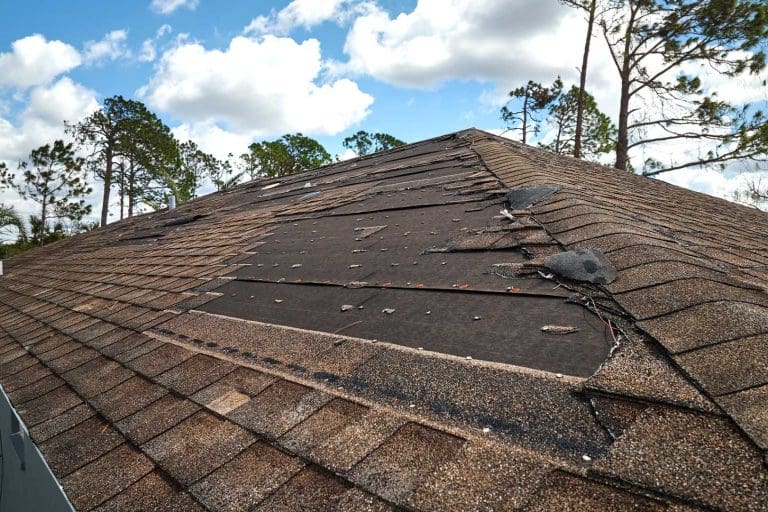New Hampshire’s climate is known for its dramatic shifts and extreme conditions, ranging from heavy snowfall and ice in the winter to powerful thunderstorms in the summer. These weather patterns can take a significant toll on your roof, making it essential to prepare and maintain it properly to ensure the safety and longevity of your home. In this blog post, we’ll delve into the key steps for preparing your roof to withstand New Hampshire’s challenging climate.
Regular Inspections: The First Line of Defense
The foundation of any good roof maintenance strategy is regular inspections. Ideally, you should inspect your roof twice a year: once in the spring and once in the fall. Here’s what to look for:
Shingles: Check for any that are cracked, curling, or missing. Shingles are your roof’s first line of defense against the elements, and damaged shingles can lead to leaks.
Flashing: Inspect the flashing around chimneys, vents, and skylights to ensure it is intact and free from rust or damage. Flashing prevents water from seeping into your home at these vulnerable points.
Gutters: Ensure gutters and downspouts are clear of debris like leaves and twigs. Clogged gutters can cause water to back up and damage the roof and fascia.
Attic: From inside your attic, look for signs of water damage, mold, or mildew, which can indicate a leak in your roof.
Spring Maintenance
As winter recedes, spring brings its own set of challenges. The melting snow and ice, combined with spring rains, can reveal winter’s toll on your roof.
1. Inspect for Damage
Once the snow has melted, perform a thorough inspection. Look for any new damage that may have occurred over the winter, such as missing shingles, damaged flashing, or signs of water infiltration in the attic.
2. Clean Gutters and Downspouts
Spring is the perfect time to clear out any debris that has accumulated in your gutters and downspouts over the winter. This ensures that rainwater can flow freely and not back up onto your roof, which can cause damage.
3. Trim Trees and Vegetation
Trim back any overhanging branches that could damage your roof in a spring storm. Falling branches can puncture your roof, while leaves and twigs can clog your gutters.
Summer Readiness
Summer in New Hampshire can bring intense heat and severe thunderstorms, which can test the resilience of your roof.
1. Check for Heat Damage
High temperatures can cause shingles to crack and curl. Ensure your attic is well-ventilated to keep your roof cool and prevent heat-related damage.
2. Prepare for Storms
Summer thunderstorms can bring heavy rain, strong winds, and even hail. Reinforce your roof by ensuring all shingles are securely in place and that any necessary repairs are completed. Installing storm shutters can also protect your home’s windows and reduce the risk of roof damage.
Autumn Preparations
As fall approaches, it’s crucial to prepare your roof for the upcoming winter months.
1. Clear Debris
Remove fallen leaves, twigs, and other debris from your roof and gutters. This prevents clogs and allows rainwater to flow freely off your roof.
2. Final Inspection and Repairs
Conduct a final inspection before winter. Address any minor issues to ensure your roof is in the best possible condition to face the coming snow and ice.
3. Inspect Insulation and Ventilation
Ensure your attic insulation and ventilation are up to par. Proper insulation prevents heat from escaping and helps keep your roof cold, reducing the risk of ice dams.
Additional Tips for Roof Longevity
Choose Durable Materials: When installing or replacing your roof, opt for materials known for their durability and weather resistance, such as asphalt shingles, metal roofing, or slate tiles.
Professional Maintenance: While regular DIY inspections are essential, it’s also beneficial to have a professional roofer conduct a thorough inspection annually. They can identify issues you might miss and provide expert maintenance.
Weatherproofing: Consider additional weatherproofing measures, such as waterproof underlayment, to provide an extra layer of protection against moisture infiltration.
Emergency Preparedness: Keep a roof repair kit handy with essentials like tarps, roofing cement, and spare shingles. In the event of damage, these items can provide temporary fixes until professional repairs can be made.
Preparing your roof for New Hampshire’s climate is an ongoing process that requires diligence and proactive maintenance. By understanding the specific challenges each season brings and taking appropriate measures, you can extend the life of your roof and protect your home from the elements. Regular inspections, timely repairs, and preventative measures are key to weathering the storm and ensuring your roof remains strong and resilient year-round. Remember, a well-maintained roof is not just about protecting your home; it’s about ensuring the safety and comfort of everyone inside.






